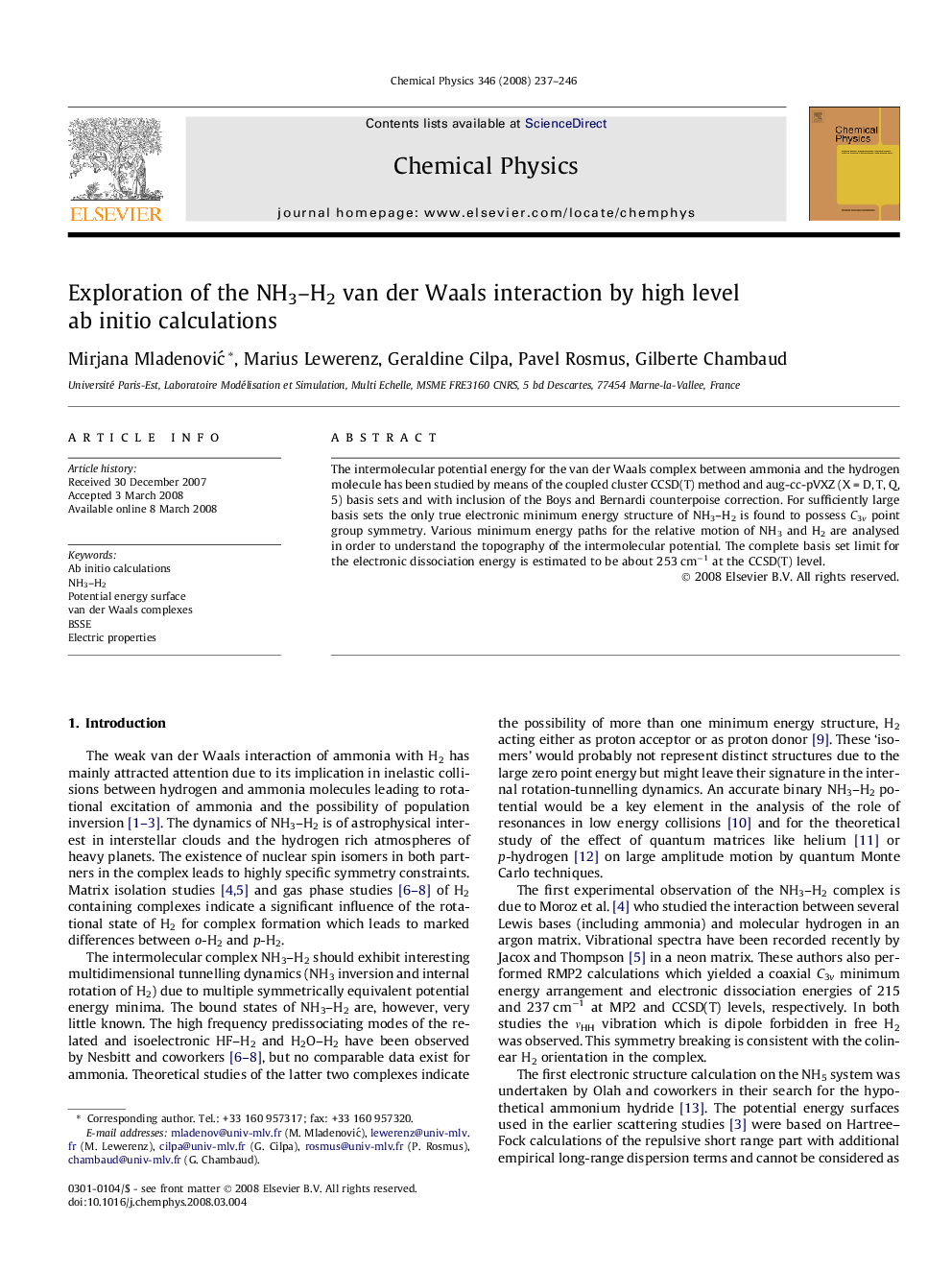| Article ID | Journal | Published Year | Pages | File Type |
|---|---|---|---|---|
| 5376069 | Chemical Physics | 2008 | 10 Pages |
Abstract
The intermolecular potential energy for the van der Waals complex between ammonia and the hydrogen molecule has been studied by means of the coupled cluster CCSD(T) method and aug-cc-pVXZ (XÂ =Â D, T, Q, 5) basis sets and with inclusion of the Boys and Bernardi counterpoise correction. For sufficiently large basis sets the only true electronic minimum energy structure of NH3-H2 is found to possess C3v point group symmetry. Various minimum energy paths for the relative motion of NH3 and H2 are analysed in order to understand the topography of the intermolecular potential. The complete basis set limit for the electronic dissociation energy is estimated to be about 253Â cmâ1 at the CCSD(T) level.
Keywords
Related Topics
Physical Sciences and Engineering
Chemistry
Physical and Theoretical Chemistry
Authors
Mirjana MladenoviÄ, Marius Lewerenz, Geraldine Cilpa, Pavel Rosmus, Gilberte Chambaud,
